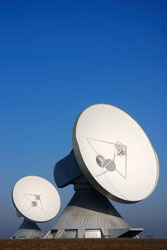Paving the way to 4G communication systems
Fourth-Generation Communications System, 4G, is a label term for the future in wireless communications where it is envisaged that multimedia data will be delivered at high speed to the user anywhere and anytime at premium quality with high security. At the moment the USA is generally perceived to be closer technologically to realising this picture. The UCAN project, Ultra-wideband Concepts for Ad-hoc Networks, intends to substantially aid in filling this technological gap between Europe and USA by applying UWB technologies for communication, ad-hoc networking and positioning. Project partners have designed, developed and assembled a generic UWB platform that serves as the basis of an advanced, location based, self-organising medium access control (MAC) and network (NW) layer scheme. The demonstrated ad-hoc networking and positioning aspects are a potential component of the future 4G communication infrastructure. With the aid of the UCAN platform, a number of communication system experiments including multimedia applications have been performed. Project partners have investigated UWB radio channel and performed UWB channel measurements and characterisation. For effective channel sounding and modelling the set up and the environment of the measurements have to be well defined. For the measurement set up, the employed components and specifications (distances and frequencies) along with block diagrams and calibration procedures have been presented in detail. Accurate description of the different scenarios where the measurement campaigns were performed depicts the measurement environment. Distinguishing the transmission status of the communication as line-of-sight (LOS) and non-LOS (NLOS) is of great importance for the wireless communication systems. Thorough process analysis for both these channel models has been performed. The current work on channel sounding and modelling apart from being an integral and vital part of the project's internal research is expected to provide more insight to the whole information research community.



